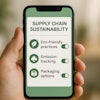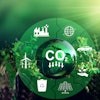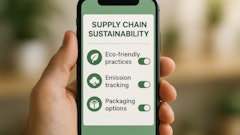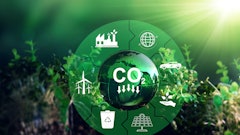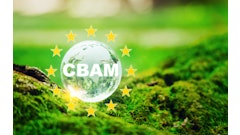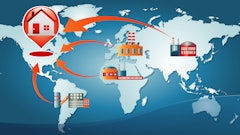
In mid-July, President Trump shocked global markets once again by announcing sweeping tariffs: 30% on all European Union goods and similar levies aimed at Canada, Mexico, China, and others, set to take effect Aug. 1. The announcement triggered an immediate European response, trade ministers convened in Brussels, prepared to unleash counter‑tariffs totaling €72 billion, while Washington warned of further duties if negotiations falter.
Economic analysis paints a mixed picture: while domestic manufacturing may see modest gains, analysts predict job losses of 0.2% and a 0.4% drag on real U.S. income over four years. At the household level, Yale projects an average annual cost of $2,400, while US GDP may shrink by around 0.7%. These dynamics of rising costs, global trade tension, and geopolitical brinkmanship underscore the need for robust, agile, and transparent supply chains.
In this new age of economic nationalism, supply chain leaders cannot afford to treat diversification and sustainability as separate initiatives. Instead, the two must be interwoven into a unified strategy that mitigates risk while reinforcing corporate responsibility.
Economic volatility meets ESG pressure
For decades, globalization has allowed companies to optimize costs by consolidating supplier bases and relying on low-cost production hubs. But the past five years have brought a relentless series of disruptions: pandemics, geopolitical conflicts, port bottlenecks, sanctions, labor shortages, and now the sudden reimposition and week-to-week uncertainty of transatlantic tariffs. In parallel, public demand for ethical, traceable sourcing continues to intensify.
This convergence of economic unpredictability and ESG pressure is forcing a permanent rethink of how supply chains are structured. Companies that continue to prioritize cost over resilience or transparency will find themselves exposed, both reputationally and operationally.
Why diversification is now a dual mandate
Supplier diversification is undoubtedly a catalyst for sustainability. By working with a broader mix of regional, certified, and low-emissions suppliers, brands can both insulate their operations and meet tightening regulations on due diligence and environmental impact. But diversification without oversight is no solution. What is needed is a framework that links supplier onboarding with environmental performance, traceability, and social compliance from day one.
How leading companies are responding
Forward-thinking supply chain leaders are taking the following steps:
- Mapping their supplier ecosystems end-to-end, not only Tier 1, but back to raw materials and fiber. This allows them to identify concentrations of risk and opportunities to onboard sustainable alternatives.
- Integrating real-time sustainability metrics into supplier selection. Tools that benchmark water usage, emissions intensity, and labor standards are helping procurement teams prioritize responsible partners even in unfamiliar sourcing regions. Facing potential 30% tariffs on goods like French cheese, Italian leather, or German electronics, buyers are now weighing ESG alongside cost and lead time.
- Tracking and validating Scope 3 carbon emissions across supplier tiers. This data is crucial for meeting climate goals, complying with emerging regulations, and preparing for carbon taxation or emissions-linked tariffs.
- Automating compliance and certifications monitoring, from social audits to environmental disclosures. As companies expand their supplier bases, they need mechanisms that flag risks early and ensure that scale doesn't come at the cost of integrity.
- Aligning sourcing strategy with geopolitical trends. As seen with the EU's renewed push for trade partnerships in Southeast Asia and South America, agility is key. Companies that can pivot sourcing based on political and environmental realities will hold a significant advantage.
The broader economic context
A recent analysis from the San Francisco Fed illustrates the dual challenge of while reinvigorating U.S. manufacturing, the tariffs may drag on wage growth and border employment, squeezing domestic service and agricultural sectors. Meanwhile, households will likely face inflation pressures, such as those projected by Yale's Budget Lab, at nearly a 1.8% spike in consumer prices from tariffs alone.
Consumer sentiment is shifting accordingly. One mistaken belief is that tariffs protect everyday consumers, but evidence shows they erode disposable income and amplify ESG pressure on brands. Stock markets reflect this complexity as indexes dipped on tariff news, but some optimism remains ahead of possible diplomatic breakthroughs.
A three‑tiered strategy for companies
To navigate this new trade environment while advancing sustainability goals, companies need a structured, proactive approach. The following three-tiered strategy offers a roadmap for building resilient, ESG-aligned supply chains capable of withstanding today's geopolitical and regulatory headwinds:
● Tier 1: Visibility and assessment: Conduct an in‑depth audit of supplier geographies, certifications, emissions, labor policies, and tariff exposure.
● Tier 2: Metrics‑driven diversification: Adopt ESG scorecards (water intensity, GHG emissions, labor audits) for supplier evaluation. Set targets e.g., X% sourcing from verified low‑carbon, certified partners within Y months.
● Tier 3: Dynamic resilience planning: Build scenarios modeling tariff impacts, including costs and timelines. Use ESG analytics to swiftly shift sourcing across diverse, compliant networks when shocks occur.
Why this matters now
Rising tariffs can drive material costs up virtually overnight, introducing sharp cost volatility at a time when supply chains are already under strain. Meanwhile, regulatory pressure is intensifying, with transparency and emissions reporting quickly becoming legal requirements across both the EU and North America. At the same time, consumer expectations are shifting with today’s buyers increasingly skeptical of opaque supply chains and more loyal to brands that demonstrate clear commitments to ethical sourcing and sustainability. Companies that proactively build ESG-aligned, diversified supply networks stand to benefit from stronger negotiating leverage during tariff cycles, greater brand trust, and reduced exposure to labor or environmental compliance risks.
Strategic, not reactive
While the impulse in a crisis is to cut costs to consolidate, the smarter move is to invest in transparency, flexibility, and ESG alignment. Doing so minimizes exposure to policy shocks as well as positions companies as responsible actors in an increasingly scrutinized global market.
The latest round of tariffs may serve as a wake-up call, but they're not the last. With economic uncertainty now constant and climate regulations tightening worldwide, the supply chain must be future-proofed for resilience and accountability alike. Indeed, business strategy, supply chain management, and ESG circles strongly support the idea that supplier diversification is both a growth enabler and a responsible practice. It’s a classic “smart risk” and a “smart values” play at once. The companies that will thrive are those that see supplier diversification as a long-term strategy to align growth with global responsibility.

